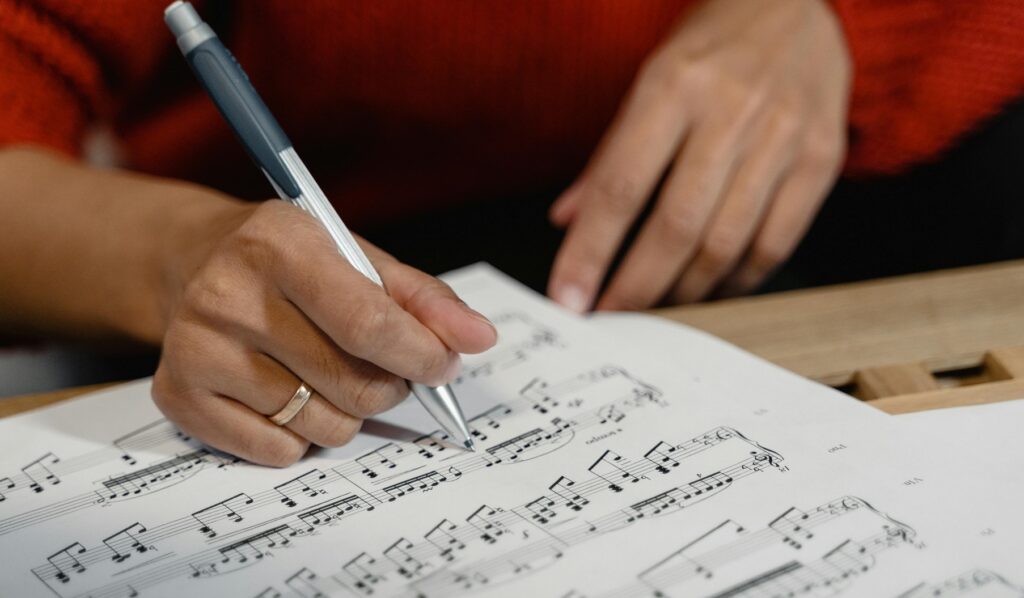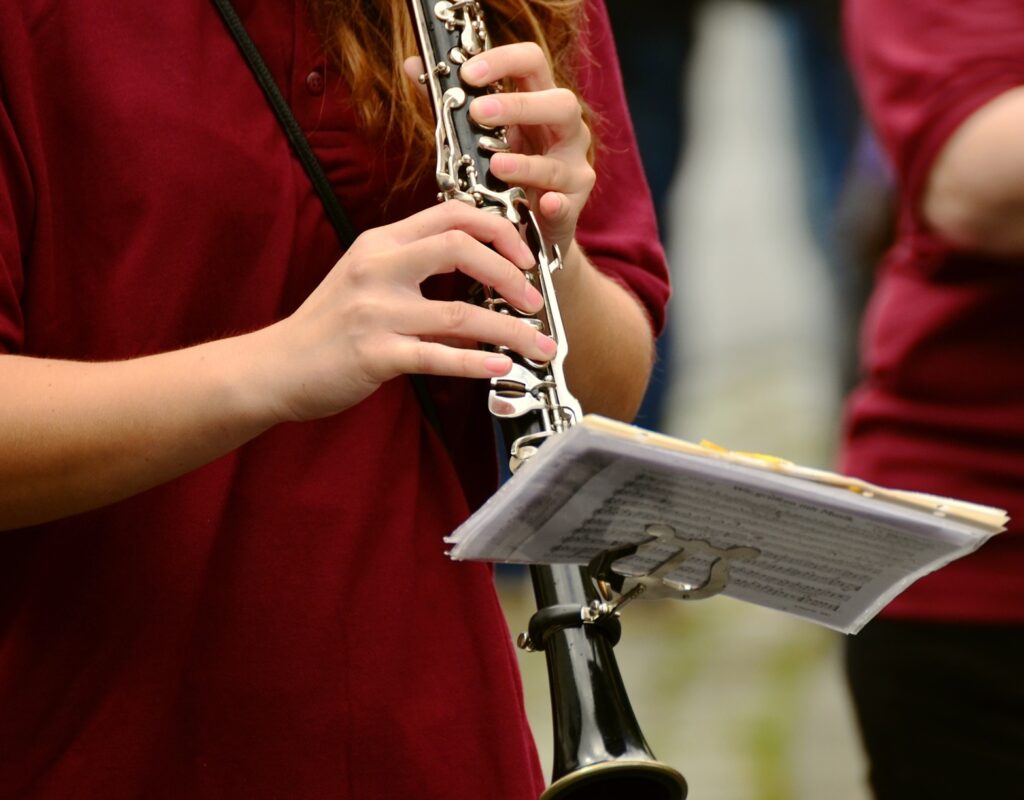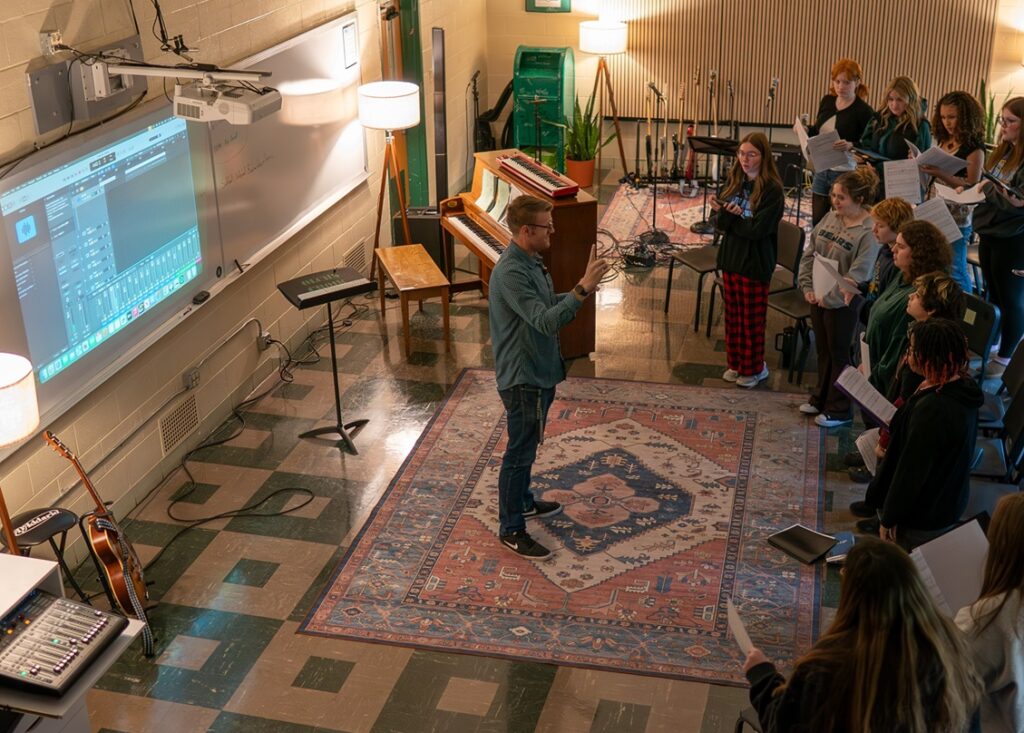Tagged Under:
Great Programs Can Have Small Numbers
Don’t feel “less than” if you have fewer students than other programs. Take advantage of more one-on-one interaction with your band students.
You’re talking with a few fellow music teachers when someone casually asks: “So how many kids are in your program this year?”
It’s meant as small talk. You answer, and in an instant, it feels like your value is on trial. You start comparing. Your number sounds small. You brace for the awkward pause, a quiet head nod or the polite: “Oh, that’s nice.”
In your head, you want to shout: The number doesn’t tell the whole story. Your kids are showing up, helping each other tune, leading warmups. They actually want to be there — and some still swing by after they graduate just to say hi.
Instead, you nod back, and the small talk moves on, but that sinking feeling doesn’t.

Bigger Isn’t Always Better
For a long time, I thought “more” meant “better.” I had this goal in my mind that I would be successful when my band needed two buses and couldn’t fit on one riser.
So, I went after that goal. I pushed hard on recruitment. Took every dropout personally. Said yes to every performance and then some.
I constantly tracked numbers. Compared enrollment year over year. Started looking at national averages and school report cards to see if our trends lined up. Here’s the funny thing: When our numbers went up, I felt validated. Like the hard work had paid off. Like I’d made it and proven something.
Then one year, our numbers dropped. Not a huge dip, but enough that I noticed. I waited for the principal to ask what was going on. But he didn’t; no one did.
Instead, I had a quieter year with fewer chairs to set up, less paperwork and — oddly — better teaching. I could hear every student play, every day. I could give more feedback. We had time to revisit sections and try new things instead of steamrolling to meet a deadline.
I still remember a rehearsal where we stopped and experimented with phrasing not because something was wrong, but just to try it a different way. That would have been difficult with a 70-piece group and a tight concert turnaround.
Midyear, I realized: This was a good band, and it mattered to every student in it.

A Small Group is a Teaching Lab
The upside of small numbers? You can actually teach like you always wanted to.
In a 60-piece group, it’s easy to miss the clarinet kid who’s been having a problem going over the break for two weeks. In a 20-piece group, you hear it immediately, and you have time to fix it without derailing the whole rehearsal.
One of my kids last year had a strange embouchure issue that only popped up when he played above the staff. It was only because we had a slower pace that I even caught it. We fixed it by March. That wouldn’t have happened in a group where I was just hoping everyone got through the piece in one piece.
Here are a few things that work well in small bands:
- Split-section work, even within one room: Let half the group run a chorale in pairs while the others work on finger drills. Then switch.
- Rotate leadership: Assign a new student to lead tuning or a breathing warmup each day. It builds ownership and keeps them engaged. A bonus is that “student-led” sometimes buys me two extra minutes to deal with small items that come up at the beginning of rehearsal.
- Solo-pass-off lines: End warmups with “line 32, who’s got it?” and let students volunteer to play. The more confident they get, the more they want to go next.
You don’t need 100 kids to teach music well. Sometimes, fewer is better.
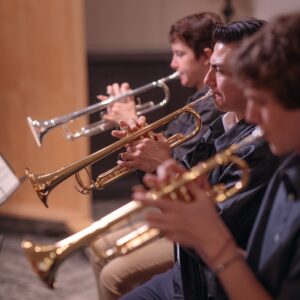
Sound First. Always.
I’ve heard phenomenal performances from 14-piece concert bands — and I’m not talking “good for their size.” I mean genuinely tight, musical playing.
What those groups had in common wasn’t perfect instrumentation. It was clarity of purpose. The directors chose literature that matched their kids — not just technically, but emotionally and logistically.
Some of my go-to strategies for small-but-mighty bands:
- Lean on flexible instrumentation: Start every rehearsal with something that lets everyone play in unison or in harmony, such as chorales, drone-based tuning, call-and-response. We’ve had full rehearsals that were just chorales and phrasing work, and those rehearsals stuck with the kids more than any sectional.
- Choose literature that lets you win: That Grade 2 piece with three percussionists and a unison low brass line might sound way better than the flashier Grade 3. Trust your ears, not the catalog.
- Build in chamber moments: One day a week, split into trios or quartets. Let kids sight-read duets. Or give each group four measures from the concert piece to rehearse and perform for the class. (Bonus: I get to walk around and listen in without talking the whole time.)
You’re teaching tone, intonation, balance. No matter the size of your group, these concepts are paramount.
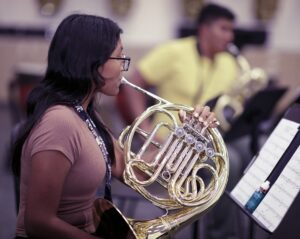
Rehearsal Routines that Do the Heavy Lifting
If your students aren’t practicing at home — and many don’t — your rehearsal structure matters more than ever. Here’s what I’ve used to build consistent progress with small bands.
Daily Routine (10 to 12 minutes max):
- Long tones with balance drones
- Articulation grid (add rhythm cells over time)
- Lip slurs / chromatics / rudiments — layered as one ensemble
- Chorale or Bach-style phrasing work
Skill Rotation (2x/week):
- Sight-reading Monday
- Rhythm drill Wednesday
- Scale check-in Friday (even just one scale a week)
Personalized Goals:
- With fewer kids, you can actually keep track of which student needs what. This is the beauty of a small group.
- I wrote one goal on a sticky note for each student every month. They stuck it inside their folder. We checked in mid-month.
- Students knew I was holding them to a standard, and that’s what they wanted. (You’ll know it’s working if you forget to do the sticky notes one month, and the kids remind you.)

If It’s Just You and 12 Kids
Some of you may be thinking, “This all sounds nice, but I’ve got 12 kids and 10 instruments. What now?”
You still have options. Try these:
- Recruit from within: Find one student who plays clarinet and say, “Want to learn trumpet, too? I’ll teach you myself on Fridays.” (That same student is now my go-to for brass transpositions. He also fixed my projector once.)
- Rewrite parts: Don’t be afraid to hand a flute player the second trumpet part. Use notation software or a pencil — whatever you have. (It won’t be perfect, but it’ll be playable. That’s the bar sometimes.)
- Adapt drills: Turn a scale exercise into a duet. Or have one student clap rhythms while another plays. Make it interactive. (I once had kids alternate scales by note — one played even notes, one played odds. It was chaos. Then it was good.)
- Ask your kids: One year, I asked the band, “If we only played three pieces this semester, what would you want them to sound like?” Their answers shaped the whole concert.
By the way, if your group sounds good, people don’t even care about the numbers.

Stop Explaining. Start Reframing.
You don’t owe anyone an explanation when they ask how many kids are in your program. You can answer honestly — and stop there.
Or you can reframe it entirely: “We have 18 this year, and I gotta say, it’s one of the most dialed-in groups I’ve had.”
Or even: “Small group. Big sound.”
Say it like you believe it. Eventually, you will.

A Win is a Win
You’re not less of a teacher because your numbers are small. You’re still teaching music. You’re still building community. You’re still showing up for your students.
That’s what matters.
And if today’s rehearsal felt like an actual class where kids learned something and laughed a little? That’s a win. Full stop.










